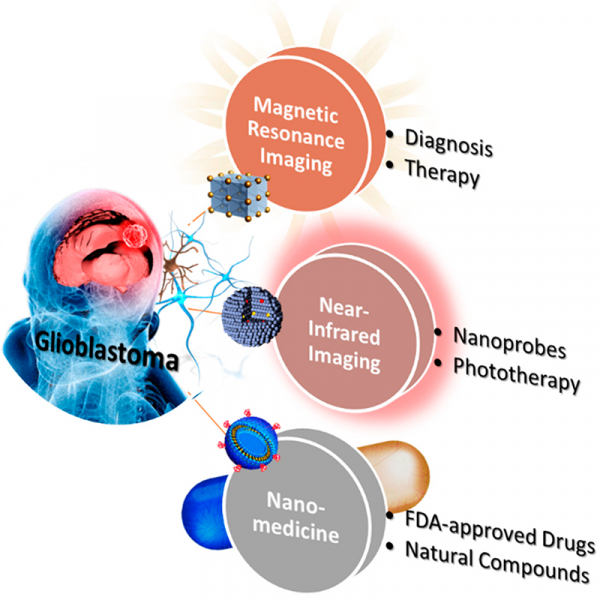The most common malignant tumor of the brain is glioblastoma multiforme (GBM) in adults. Many patients die shortly after diagnosis, and only 6% of patients survive more than 5 years. Moreover, the current average survival of malignant brain tumors is only about 15 months, and the recurrence rate within 2 years is almost 100%. Brain diseases are complicated to treat. The reason for this is that drugs are challenging to deliver to the brain because there is a blood–brain barrier (BBB) protection mechanism in the brain, which only allows water, oxygen, and blood sugar to enter the brain through blood vessels. Other chemicals cannot enter the brain due to their large size or are considered harmful substances. As a result, the efficacy of drugs for treating brain diseases is only about 30%, which cannot satisfy treatment expectations. Therefore, researchers have designed many types of nanoparticles and nanocomposites to fight against the most common malignant tumors in the brain, and they have been successful in animal experiments. This review will discuss the application of various nanocomposites in diagnosing and treating GBM. The topics include (1) the efficient and long-term tracking of brain images (magnetic resonance imaging, MRI, and near-infrared light (NIR)); (2) breaking through BBB for drug delivery; and (3) natural and chemical drugs equipped with nanomaterials. These multifunctional nanoparticles can overcome current difficulties and achieve progressive GBM treatment and diagnosis results.
語言
Monday, 21 February 2022 16:09
